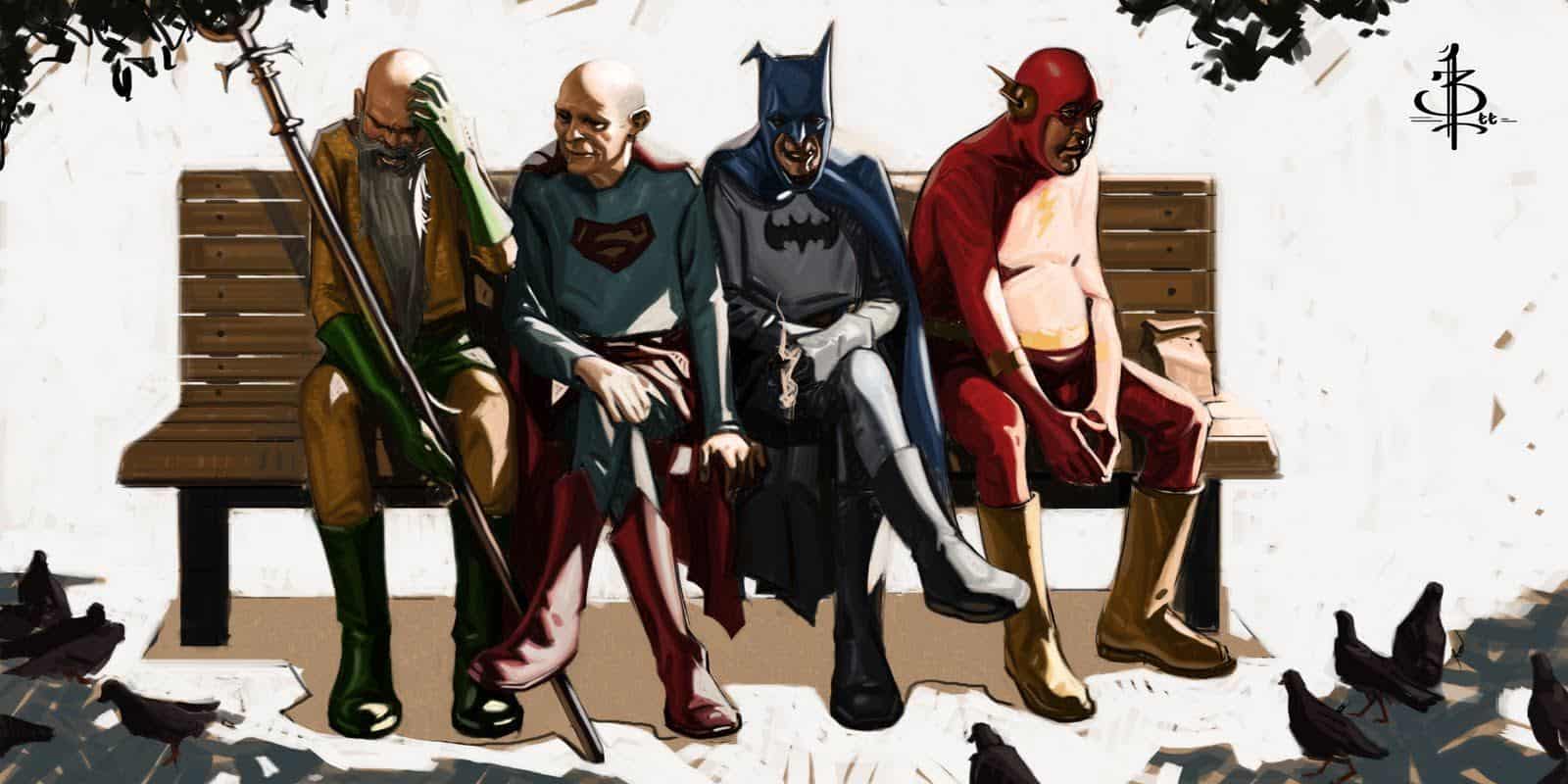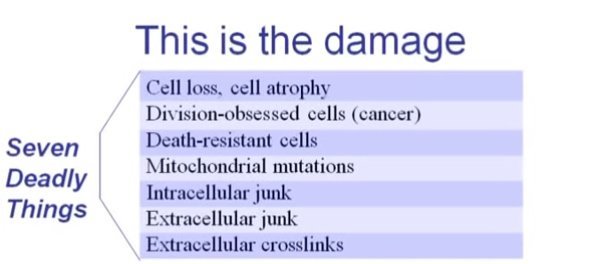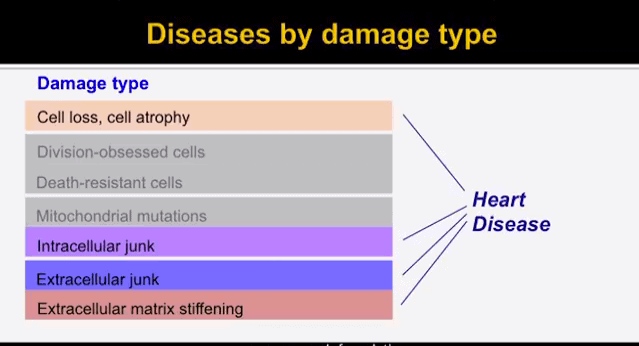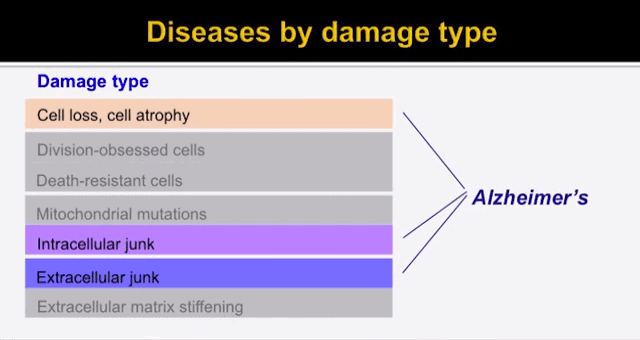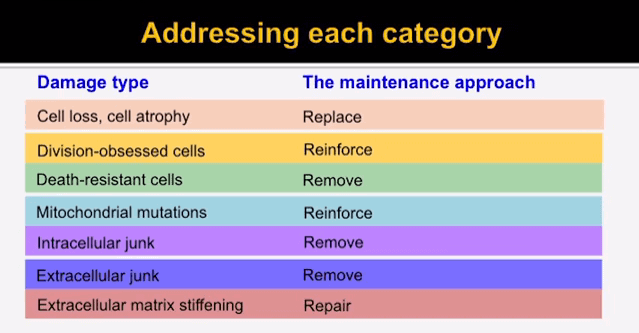7 Ways Science Will Repair the Damage of Old Age
How long would you want to live if you could stay as healthy as you were at 40? Two prominent scientists are getting close to making this your reality as they work to repair the damage of old age.
MANY OF us have no interest in extending our live span because we think that would mean more years being feeble and a burden to our families. But what if you could retain much of your youthful capacity as you moved into those “twilight years”?
Would you say “no” to ten or twenty extra years if you could maintain robust health?
In this article, you’ll discover:
- When scientists speak about increasing longevity, they presume an increase in healthspan as well – you won’t be wearing Pampers;
- Why our society and economy must have a solution to the overwhelming financial burden that will beset us if the diseases of old age are not conquered; and
- Two different methodologies taken by two brilliant anti-aging scientists that hold the promise that you can age better… just do the best you can for now.
We’re going to zig zag between two of the most renowned anti-aging researchers on this planet, Aubrey de Grey and David Sinclair, using their respective TED talks to tell a story about the unhappy consequences of aging and what can be done about it. (Their videos are at the bottom.)
Dr. David Sinclair at Sydney — It’s a societal imperative to improve aging
I’ll begin with Dr. Sinclair’s opening at his Sydney TED talk where he shares a bedtime interaction between himself and his four year old daughter.
She asks her dad if he’ll always be there to protect her. The truth-telling scientist admits that he will get old and die like all people do. Her tears well up. He sweetly tells her to forget about that he’ll die someday, and she does. (Don’t we all?)
“I wish to live only in this intoxicating dream.
Sweet flame, my heart holds you as a treasure.
The flame of youth, alas, burns but a day.
The time to weep comes, and the heart surrenders to love.
And joy flies away forever!
I want to remain in this intoxicating dream.
Sweet flame of youth, my heart holds you as a treasure.
Far from snowy winter, do not wake me;
But let me breathe in the rose, before it withers
None of us want to think about our death, and the slow, interminable decline that precedes it; and that includes those health institutions established to help keep us healthy.
Take the World Health Organization for instance, whose 2011 Global Health and Aging report declares that unless we keep the elderly healthy and productive the associated cost will crush our economies and our way of life.
Figure 6 in the report (below) clearly shows that it’s no longer the communicable diseases that will burden health care systems across the world, but an aging population beset by lifestyle-engendered chronic diseases. Disease states such as diabetes, obesity, various forms of heart disease, and others, become more prevalent as we get older.
They are physiological consequences of the biological deterioration that builds up over time, becoming noticeable beginning in the last half of life, and then consequential in the last third.
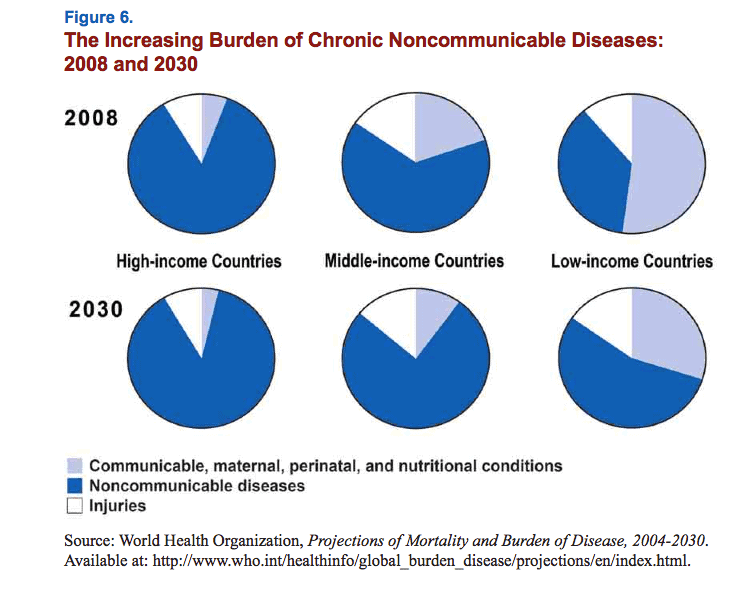 [(1), page 13]
[(1), page 13]
Despite the rapid decline in the health and productivity of the elderly, only a fraction of one percent of medical research is devoted to why we age and what to do about it. And that’s despite the fact that both men and women spend a huge portion of their lives, nearly 40%, in poor health:
 (From Dr. Sinclairs’ video below at 16:20)
(From Dr. Sinclairs’ video below at 16:20)
Only 60% of one’s life spent in good health is pretty appalling.
Now let’s zag to Dr. Aubrey de Grey, who in his TED Talk in Danubia, Hungry began by asking the audience who among them wanted to get Alzheimer’s at the age of 90?
There were no takers.
Aubrey then explained that there’s a clear and obvious relationship between the disease of old age and aging.
Duh.
Yes, as I said, “obvious”, but he goes on to make an important point that many of us miss when we reflexively say something like, “No way do I want to live to 90!”.
We may make such a declaration because we presume that by age 90 we’ll be bent over in a wheel chair drooling on ourselves in front of a blaring TV. We know about the infirmity that typically accompanies old age, and we don’t want any part of it.
The above graph is a testament to why this attitude is so prevalent… we know that as we get older, the chances are good that much of that time will be spent in poor health.
But what if we could disconnect the relationship between old age and decrepitude? What if you could manage to look, feel and function as well as you did in early adulthood, however long ago you were born?
You’ll soon see that scientists are getting closer to doing just that, but much more needs to be done, and with greater urgency. Aging couldn’t be more personal, and we each have an incentive to extend our healthspan (and with this, inevitably, our lifespan), but there’s a societal imperative as well.
Dr. Aubrey de Grey at Salford — Regenerative medicine must repair the damage
In a TED Talk in Salford, England (see below), Dr. de Grey began with demonstrating the disconnect between the societal costs of aging, underscoring Dr. Sinclair’s mention of the looming and devastating social and financial costs that society will have to bear.
De Grey does that by presenting the skyrocketing cost of health care in the United States:
The red line in the above graph shows the growth in the US economy over last 50 years. The blue line is how medical care expenditure has gone up over that time. The green line tells the tale – it shows the proportion of the economy spent on medical care, and it has grown from 5% to 18%, largely due to the expenses associated with the so-called diseases of aging.
Medicine has gotten really good at fixing injuries and the diseases of infection, but has gone nowhere when it comes to the diseases of old age. The reason why, Dr. de Grey asserts, is because…
aging is a side effect of being alive!
Age-related diseases are simply the result of having too much damage that accumulates over time as we age. Because aging is a side effect of being alive it cannot be eliminated like an infectious disease.
If you get an infectious disease and cure it, it’s permanently gone unless you get reinfected. That cannot happen with aging because it’s part of living – it cannot be permanently “cured”, but that doesn’t mean the diseases of aging are not intrinsically resistant to medical interventions… it just has to be particular types of interventions. And they are not being adequately explored.
The National Institute of Health spends $30 billion on medical research. Only 3% goes to aging (the National Institute of Aging) even though 90% of medical expenditures in the U.S. go to treating age-related diseases. Worst yet, within the National Institute of Aging only one-sixth of their budget goes to understanding aging, and only 10% of that goes to trying to actually doing something about aging (not just understanding it).
Well, how do we understand it, this aging thing?
“Aging is simply the accumulation of damage in the human body or any other living animal”, Dr. de Grey says, and the key to overcoming aging is to repair the damage as it occurs.
He goes on to say that we’re on the precipice of learning how minimize the deleterious effects of aging through the development of regenerative medicines, this the focus of his innovative SENS Foundation.
The aim of regenerative medicine is to create interventions that can restore the structure of a body to its state before the damage was done — in effect to make people biologically younger — whether dealing with:
- Organs (artificial replacement),
- Cells (stem cell therapy), and/or
- Molecular (repairing the insides of cells).
There’s a good metaphor for this approach, the automobile.
Like the car, the human body is a machine. Cars are designed to last 15 years or so, and yet cars are still running that are 100 years old because they were well maintained.
{Read What A 50-Year Old VW Can Tell You About Your Lifespan?}
What would be the lifespan of a human biological machine if it (we) were consistently and vigilantly maintained? No one really knows the answer, but it’s reasonable to assert that a human’s lifespan, like the vintage car, would be longer.
The great thing about focusing on repairing damage is that it’s not as complicated as the other two approaches typically taken, says Dr. de Grey. One favored by Gerontologists seeks to slow aging down typically by altering metabolism, The Geriatrics’ approach is to patch up the pathological consequences of aging.
Lead by Dr. de Grey, the SENS Foundation has identified seven types of damage of old age, which they believe is comprehensive, and has been unchallenged since 2002:
Let’s take a look at how a few of the seven types of damage listed in the above table manifest into specific disease states.
“Division-obsessed cells” is an attribute of cancer, basically a single damage type, which can be defined as having too many cells that are dividing, and not dying when they’re not supposed to.
Heart disease, the number one killer in most industrial societies, touches on several types of damage:
Lots of things go wrong with heart disease during aging:
- Sometimes the loss of cells makes the heart stop because pacemaker cells that control heart beat are not numerous enough;
- Atherosclerosis causes strokes or heart attacks as a result of “molecular garbage” inside cells of the artery wall;
- Garbage accumulates between cells that cause senile cardiac amyloidosis;
- Or arteriosclerosis (hardening of arteries) caused by hyper tension due to changes to the “extracellular matrix”.
Alzheimer’s has three types of damage:
- Molecular inside cells (called tangles),
- outside cells (called plucks), and
- cells dying.
So, you can see that some of the diseases of old age have complex underlying conditions that must be addressed, which nicely segues to the “4 Rs”.
The “4 Rs”
The title of this article is “7 Ways Science Will Repair the Damage of Old Age”, but in fact “repair” is but one of four approaches for preventative maintenance. There are three others that apply to the seven categories that create the damage associated with aging, together constituting the 4 Rs:
- Replace,
- Remove,
- Repair, and
- Reinforcement.
The 4 Rs would be applied to achieving preventative maintenance like this:
The 4 Rs are guiding the maintenance approach now being researched by the Sens Foundation. And now that you may have gotten quite comfortable with this approach lead by Dr. de Grey, you should know that it’s not the only age-intervention game in town.
Yes, we now need to zig back to Dr. Sinclair.
Dr. Sinclair and Sirtuins
Like Dr. de Grey, David Sinclair has devoted himself to scientific research to discover how to improve our health as we age. He says that as we get older, genes turn on and off in the wrong way, as he describes with the use of some illustrations starting at 10:00 in the video below.
What Dr. Sinclair discovered is that as yeast cells got older all their genes turned on and they died. Looking for a longevity gene to turn them off, he discovered SIR2, (“Silent Information Regulatory #2”). Further research at Harvard Medical School lead him to finding seven longevity genes in humans, called Sirtuins, which appear to protect our bodies from aging.
Various things seem to trigger Sirtuins, such as resveratrol found in red wine, as well as boosting the cellular levels of a molecule called NAD (“nicotinamide adenine dinucleotide”), and calorie restriction.
Sirtuins works is by influencing the way DNA is made. DNA is encased in proteins called histones, which stabilize the structure of the DNA. When the Sirtuin gene is activated — say through the starvation stimulus, or possibly by NAD or resveratrol — the resulting increased activity of the Sirtuin protein compresses the DNA on the histones, and thereby slows how chromosomes are reproduced, and reduces errors during the process. (2)
“Sirtuins” seem to work through metabolic functions. If that’s the case, his work departs from de Grey’s in that Sinclair’s work aligns with the Gerontologist approach to manipulate metabolism in order to slow down aging; whereas de Grey’s approach is to repair the damage wrought by the aging process.
Which approach will repair the damage of old age, and get us to the holy grail of age intervention?
The answer to that, as they say, is beyond by pay grade, but we’ll be following the research on this site, so stay tuned.
And now to the videos:
After watching those two videos, you may be inspired to learn more about what you can do to extend your healthspan. There are hundreds of articles on this site that will set you on the right course. Go to the Categories section in the sidebar on the right hand side of this page, and select your topic of interest.
You may also get on the list to receive the 12 Ageproof Biohacks, a book which I’m currently writing.
Get On The List! P.S. Here’s some more on Dr. Aubrey de Grey: Aubrey de Grey: “We Can Stop Aging” — Watch.
Last Updated on April 25, 2022 by Joe Garma

